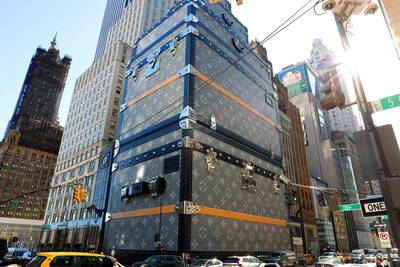Getting sued, laying off most of your workforce, losing your third chief executive and then being bought out doesn't sound like the history of a successful company that could teach Internet businesses a key lesson. But Napster's problems make it one of the best examples of the value of "network effects" and how you can make your users build your service for you.
The Internet and the open source movement have made huge changes to businesses in recent years, but the jury is still out on how those changes add up to a new way of doing business. Speaking at BEA's recent eWorld conference, Tim O'Reilly, chief executive of computer book publisher O'Reilly & Associates, suggested that the licensing question that exercises many open source advocates -- and the companies that see open source as a way of saving money by switching away from Microsoft -- is actually irrelevant.
The most popular Linux applications aren't databases or office tools, he points out: They're services such as Google, Amazon and PayPal, which run on servers running open source tools such as Linux, FreeBSD, Apache, MySQL, PHP and Perl. Just saving money on software licenses is not what makes them successful. Also, they don't need to let anyone see the source code because they don't distribute them.
"These are all fiercely proprietary companies, so something is wrong with the idea that once we have open source software, there will be no intellectual property," says O'Reilly. "We have people like Jim Allchin [of Microsoft] saying that open source is an intellectual property destroyer. It's just not true. Here you have these companies with huge amounts of intellectual property but it's sitting somewhere else in the business."
When tools and services get more valuable as more people use them, that's known as the network effect. Telephones, fax machines and email are the most obvious examples, but network effects drive many successful businesses. New users pick Microsoft Office because it is what most employers want you to know, and the more people who use the Office file formats, the easier it is to share documents. Thus, network effects don't just bring you new customers, they make what you sell more valuable to old and new customers alike.
O'Reilly thinks that is the key for open source and internet businesses.
"What really matters is the architecture of systems: open source is ultimately about systems that create and manage and magnify network effects," he said.
That means if you design the system right, you won't need to do the hard work yourself: your users and partners will do it for you.
Not because you are paying them (like Yahoo's editors) or out of the goodness of their hearts (like the volunteers who compile the Open Directory or the Wikipedia), but as a side effect of what they're doing for their own self-interested reasons.
Napster and other file-swapping services didn't spend time building a complex network for their users: they gave users the tools and the incentive to do it. They are not the only services to take advantage of their users. EBay's customers don't just provide the products and content on the auction site, they police each other by giving feedback. Google's search tools help users find information on the web, but the PageRank algorithm exploits the millions of links that individual web developers create to pages they think are interesting.
Amazon uses customers' searching and spending habits to suggest relevant products: When you search, you don't get the newest or cheapest books unless you specifically ask for them, you get the ones that are most popular in terms of reviews and sales. Look for information on Microsoft's support site and, as well as official resources, you will find links to relevant discussions in public newsgroups, so you can see if someone has already found a solution.
These are ideas any company can use on its site or in a service, so you need to make sure you own the user-generated data and metadata that give your service the network effect.

TAKING STOCK: A Taiwanese cookware firm in Vietnam urged customers to assess inventory or place orders early so shipments can reach the US while tariffs are paused Taiwanese businesses in Vietnam are exploring alternatives after the White House imposed a 46 percent import duty on Vietnamese goods, following US President Donald Trump’s announcement of “reciprocal” tariffs on the US’ trading partners. Lo Shih-liang (羅世良), chairman of Brico Industry Co (裕茂工業), a Taiwanese company that manufactures cast iron cookware and stove components in Vietnam, said that more than 40 percent of his business was tied to the US market, describing the constant US policy shifts as an emotional roller coaster. “I work during the day and stay up all night watching the news. I’ve been following US news until 3am

Six years ago, LVMH’s billionaire CEO Bernard Arnault and US President Donald Trump cut the blue ribbon on a factory in rural Texas that would make designer handbags for Louis Vuitton, one of the world’s best-known luxury brands. However, since the high-profile opening, the factory has faced a host of problems limiting production, 11 former Louis Vuitton employees said. The site has consistently ranked among the worst-performing for Louis Vuitton globally, “significantly” underperforming other facilities, said three former Louis Vuitton workers and a senior industry source, who cited internal rankings shared with staff. The plant’s problems — which have not

UNCERTAINTY: Innolux activated a stringent supply chain management mechanism, as it did during the COVID-19 pandemic, to ensure optimal inventory levels for customers Flat-panel display makers AUO Corp (友達) and Innolux Corp (群創) yesterday said that about 12 to 20 percent of their display business is at risk of potential US tariffs and that they would relocate production or shipment destinations to mitigate the levies’ effects. US tariffs would have a direct impact of US$200 million on AUO’s revenue, company chairman Paul Peng (彭雙浪) told reporters on the sidelines of the Touch Taiwan trade show in Taipei yesterday. That would make up about 12 percent of the company’s overall revenue. To cope with the tariff uncertainty, AUO plans to allocate its production to manufacturing facilities in

TARIFF CONCERNS: The chipmaker cited global uncertainty from US tariffs and a weakening economic outlook, but said its Singapore expansion remains on track Vanguard International Semiconductor Corp (世界先進), a foundry service provider specializing in producing power management and display driver chips, yesterday withdrew its full-year revenue projection of moderate growth for this year, as escalating US tariff tensions raised uncertainty and concern about a potential economic recession. The Hsinchu-based chipmaker in February said revenues this year would grow mildly from last year based on improving supply chain inventory levels and market demand. At the time, it also anticipated gradual quarter revenue growth. However, the US’ sweeping tariff policy has upended the industry’s supply chains and weakened economic prospects for the world economy, it said. “Now